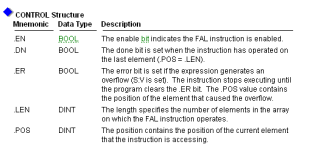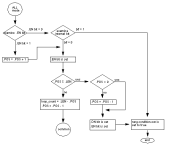Denied ! but resolved.
OK... well I have resolution which is what GaryS was trying to say and I didn't get it only because it didn't make sense to build the instruction like this.
The flowchart clearly says that if .LEN => .POS the instruction ends and sets its bits.
But in this case .LEN>.POS is how I have in initially set up and is how I needed it to work.
It would make sense to have this instruction be capable of reading .LEN elements from any start position in an array, leaving the out of bounds errors to the programmer.
But this instruction is literal with it's numbers and so in this case the instruction ends as soon as it starts.
So of a 100 (or one million) element array I wanted to start at position 70 and read 30 elements... and the reason I can't is only because 70 is greater than 30 regardless of the construct it's reading from. I would consider that to be a flaw, not a bug, but a flaw in the instructions design.
So I have to put this offset in the expression which I knew was an option, and now I know its the ONLY option.
Thanks for the assist folks.







